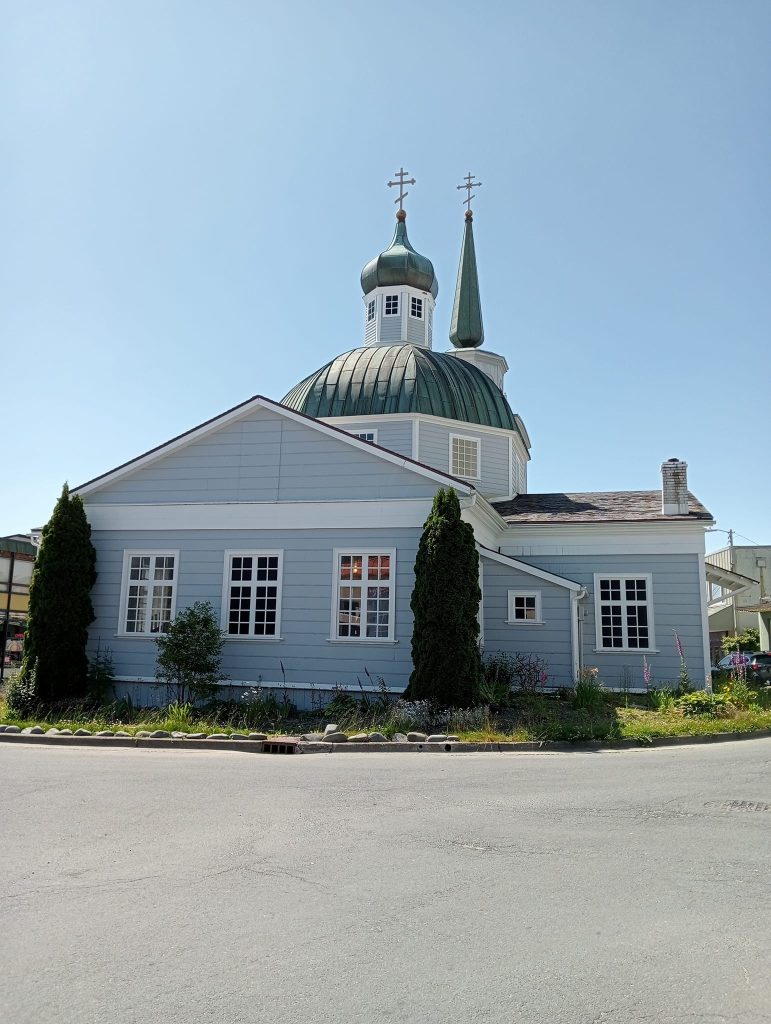By Tim Lambert
Early Sitka
The indigenous people of Southeast Alaska were the Tlingit. They were hunter-gatherers. They mostly depended on fishing for their livelihood, although they also hunted mammals like seals.
The Russians first arrived in Alaska in 1741. They built their first settlement at Unalaska in 1772. In 1790, Aleksander Baranov (1746-1819) was appointed the first Governor of Alaska by the Tsar. In 1799, he built a settlement called Fort St Michael on the site of Sitka. However, the Tlingit destroyed the fort in 1802. The Russians returned in 1804. They fought the Battle of Sitka with the Tlingit in October. Neither side could gain a decisive advantage, but the Tlingit withdrew, allowing the Russians to land. The Russians built a new settlement called New Archangel, but relations with the Tlingit remained tense.
In 1808, Sitka was made the capital of Alaska. It remained the capital until 1906. It was an important fur port.
In 1867, US Secretary of State William Henry Seward signed a treaty to buy Alaska from Russia for $7.2 million. On 18 October 1867, a ceremony formally transferring the territory was held on Castle Hill in Sitka.
The Russian Bishop’s House was built in Sitka in 1842. St Michael’s Russian Orthodox Cathedral was first built in 1848. Unfortunately, it burned down in 1966, but it was reconstructed.
Sitka Lutheran Church was built in 1843. St Peter’s by the Sea Episcopal Church was built in 1899.
In 1880, the population of Sitka was 916. The little town was flourishing. The Sheldon Jackson Museum was founded in 1888.
Sitka National Historical Park began in 1890 when President Benjamin Harrison made it a park. In 1910, it was made a national monument. In 1972, it became Sitka National Historical Park.
The Hanlon-Osbakken House was built in 1896. May Mills House was built in 1913. Sitka Pioneer Home was built in 1934.
The Alaska Native Brotherhood was formed in 1912 to fight racism. In Sitka, the Alaska Native Brotherhood Hall was built in 1914.
Modern Sitka
Sitka was incorporated as a city in 1913. In 1900, the population of Sitka was just under 1,400. However, it declined slightly to just over 1,000 in 1930. The population of Sitka rose during the 1930s, and in 1940 it was a little under 1,900.
The old St Gregory’s Catholic Church was built in 1922. A new church was built in 1973.
A navy seaplane base was built on Japonski Island in 1937. In 1942, it was made a Naval Operating Base. It was decommissioned in 1944.
Also in 1942, the famous Totem Pole in Totem Square was erected. It was restored in 2011.
Sitka Blockhouse is a replica of an early 19th-century Russian blockhouse. It was erected in 1962.
Mount Edgcumbe High School was established in 1947. Sitka Community Hospital was built in 1956. The Sitka History Museum opened in 1967. Also in 1967, the Harrigan Centennial Hall was built. The first Sitka Summer Music Festival was held in 1972.
Rocky Gutierrez Airport opened in 1969. It was named after a former mayor of Sitka. The John O’Connell Bridge, built in 1972, connects Baranof Island with Japonski Island. It too was named after former mayor John O’Connell.
Alaska Raptor Center was founded in 1980. Sitka Fortress of the Bear was founded in 2003. Sitka Sound Science Center was founded in 2007. The Michio Hoshino Memorial Totem Pole was erected in Sitka in 2008. It is a memorial to a Japanese wildlife photographer.
Meanwhile, Highliner Coffee was first brewed in Sitka in 1994.
In 1950, Sitka’s population was still under 2,000, but it rose rapidly. In 1970, its population was about 6,100. In 2025, it was about 8,200. However, by area, Sitka is the largest city in the USA. In 2000, 2,717 miles were added. Today, Sitka covers 2,874 square miles.
Today, important industries in Sitka include fishing, canning, lumbering, and tourism. Many cruise ships visit Sitka each year.
In 2025, a new Mount Edgecumbe Medical Center is being built.

The Russian Orthodox Cathedral in Sitka